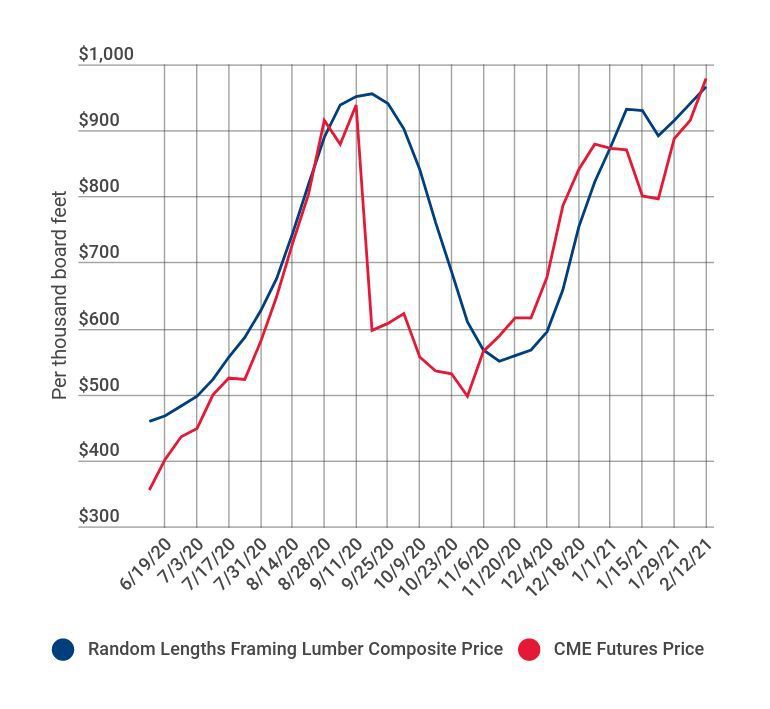Inman News
Pandemic-related supply chain issues and shortages of lumber have continued to contribute to rising lumber prices, but intense homebuyer demand for single-family homes has kept builder confidence steady.
The National Association of Home Builders (NAHB) and Wells Fargo Housing Market Index (HMI) increased a modest one point in February to 84, according to a press release issued by NAHB on Wednesday.
The index is based on a scale from zero to 100 and gauges builder perceptions of single-family homes sales and sale expectations for the next six months.
Pandemic-related supply chain issues and shortages of lumber have continued to contribute to rising lumber prices — to the point of record-high lumber prices seen in mid-February — but intense homebuyer demand for single-family homes has kept builder confidence steady.

The most current framing and lumber prices | Credit: NAHB
“Lumber prices have been steadily rising this year and hit a record high in mid-February, adding thousands of dollars to the cost of a new home and causing some builders to abruptly halt projects at a time when inventories are already at all-time lows,” NAHB Chairman Chuck Fowke said in a press statement.
“Builders remain very focused on regulatory and other policy issues that could price out households seeking new homes in a tight market this year.”
Despite builders’ confidence now, the association noted that confidence might dip in the near future if the same cost and supply chain issues persist into 2021.
“Demand conditions remain solid due to demographics, low mortgage rates and the suburban shift to lower cost markets, but we expect to see some cooling in growth rates for residential construction in 2021 due to cost factors, supply chain issues and regulatory risks,” NAHB Chief Economist Robert Dietz said in a statement. “Some builders are at capacity and may not be able to expand production due to these headwinds.”
The HMI index that gauges current sales conditions remained the same at 90. However, the index that measures sales expectations in the next six months declined by three points to 80, while the gauge that measures prospective buyer traffic increased by four points to 72.
By region, the Northeast was the only part of the country with gains in the three-month moving average of regional HMI scores with an increase of two points to 78. Meanwhile, the Midwest fell by one point to 81, the South by two points to 84, and the West by two points to 93.
